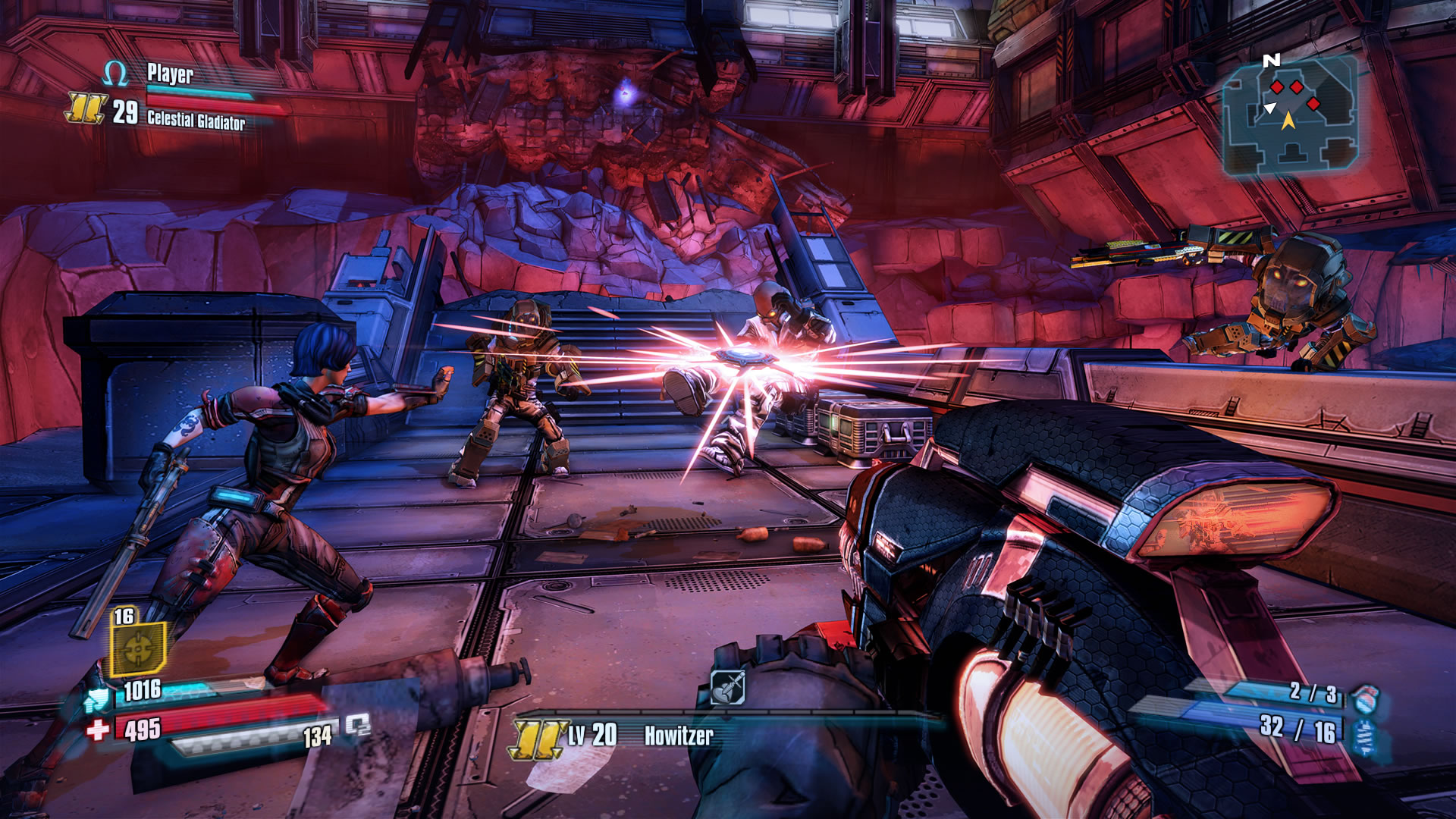Borderlands: The Pre-Sequel takes place on Pandora's moon Elpis, named after the ancient Greek personification of hope, the last item left in Pandora's box once everything else escaped. Moons aren't known for an abundance of gravity or atmosphere, which very neatly creates a foundation for fundamental changes in how Borderlands: The Pre-Sequel is played.
For anyone who isn't a robot, keeping a constant supply of oxygen is important for staying alive. Science has a clever solution to the whole breathing in a vacuum: Oz bubbles. Oz bubbles provide a limited supply of O2 that can be refilled by walking over air vents, picking up oxygen canisters from fallen enemies, or by stepping into atmosphere bubbles generated by special machines. Oxygen depletes at a steady rate in a vacuum, and once it runs out, you start losing health.

Since you're walking around with a portable air supply, might as well use it for things other than breathing. Double jumps are now a thing in Borderlands: The Pre-Sequel. Sacrifice a bit of O2 and you can leap longer distances and gain extra height with stationary hops. Exploration is a lot more fun when you've got a built-in jetpack. Oxygen can also be used to revive fallen comrades faster than normal. It's pretty costly to use this method, but if there's a fresh supply of O2 nearby, your teammates will appreciate the expedited service.
Keeping an eye on your oxygen meter doesn't require that much attention. As long as you aren't jetting around like a flying squirrel, you'll find the naturally occurring air pockets to be more than enough to keep you comfortable. If you just have to have more, you can always hunt down a different Oz kit. Like shields and class mods, Oz kits can be found or purchased throughout Elpis and equipped to give your stats a tweak. Everything from O2 maximums to mid-air ability buffs are tied to these kits, making them a nice addition to the equipment screen.
Another thing Oz kits play into is the ground pound, a.k.a. the butt-slam, a.k.a. the gravity-assisted rapidly descending aerial impact maneuver (for when you're showing off at parties). This new move seems a little awkward at first, as it isn't easy to hit enemies that never stand still. Once you get the hang of pounding, you and your buddies will be hopping around like thwomps in a swimming pool. Ground pounds also come in elemental varieties and are great for fighting groups of weak enemies with area of effect attacks. Swarm of bugs in the way? Hop and slam!

Even though they look otherworldly, many of the creatures who inhabit Elpis are similar to those on Pandora. You'll find analogues to things like skags, spiderants and rakks, but there are also moon-equipped bandits, psychos, badasses and midgets. Humanoid enemies have O2 bubbles of their own and love to jet around the sky, which can be frustrating when you're itching for a ground pound kill. Or, you know, any kind of kill. Aerial combat was always clumsy in Borderlands, and Borderlands: The Pre-Sequel makes that situation a little worse with the increase in airborne combat. There are a few abilities that help contend with flying foes, but for the most part you'll just have to run around with an eye in the sky, hoping your accuracy score is enough to hit that tiny hovering target pecking at your shield.
With new enemies comes new weapons. Borderlands: The Pre-Sequel adds two new categories of guns to the mix: lasers and cryo. Lasers are their own type of gun that come in several different shooty varieties, such as the Star Wars-style blasters and Ghostbusters-style wave zappers. (We tried crossing the streams. Nothing special happens.) The cryo element is Borderlands: The Pre-Sequel' interpretation of ice. When the attack connects it freezes enemies solid, allowing you to walk up and melee/butt-slam them to pieces. This plays surprisingly well with the rhythm of combat, and it's especially effective in co-op. Nothing says teamwork like freezing the badass who's about to decapitate your best friend.